Quick Navigation
- 1. Smoke Detectors
- 2. Carbon Monoxide Detectors
- 3. Radon Detector/Kit
- 4. Night Lights
- 5. Motion Sensor Lights
- 6. Slip-Resistant Throw Rugs
- 7. Bathroom Grab Bars
- 8. Smart Locks
- 9. Deadbolt Locks
- 10. Ground-Fault Circuit Interrupters
- 11. Fire Extinguishers
- 12. First-Aid Kit
- 13. Fire-Safe Window Guards
- 14. Evacuation Plan
- 15. Disaster or Supplies Kit
- 16. NOAA All-Hazard Alert Radio
- 17. Emergency Phone Numbers
- 18. Tested Appliances
- 19. Safety Ladder
Did you know that in the year 2019, 215 lives were taken by fire accidents in homes?
Research shows that if you don’t have functional safety devices such as smoke alarms in your home, you’re about eight times more likely to die in a fire.
Well, it’s an excellent decision to double your amount of effort in doing all necessary precautions to ensure and keep your house and family safe.
As we further discuss more, you will see below a list of safety items for the home that you should own:
1. Smoke Detectors

Smoke alarms are a crucial factor when it comes to home security. Home fires usually go unseen until they are out of control. When a fire occurs, a fire alarm will sound instantly, giving you adequate time to put it out before it spreads.
I recommend examining them at least once a season, but better once a month. Your smoke detectors might as well not be there at all if they aren’t working.
2. Carbon Monoxide Detectors
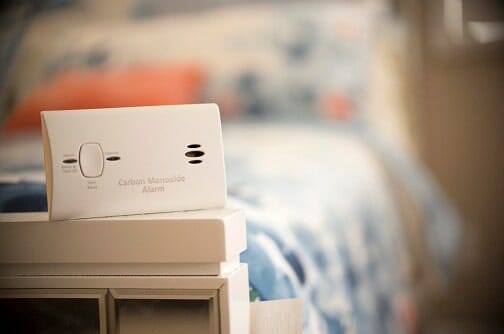
In 2020, odorless, colorless, and tasteless gases killed 300 people and sent thousands more to the hospital.
Carbon monoxide is an odorless, colorless, and tasteless gas that requires a CO detector to recognize. It can create serious, potentially life-threatening health problems if it accumulates throughout your household. (1)
It will help if you have carbon monoxide detectors in your home. These safety devices are necessary to verify that no harmful gasses are present.
To be safe, keep one near any gas appliances in your home. A carbon monoxide gas is a silent killer you can’t see or smell, and a detector can save your life.
3. Radon Detector/Kit
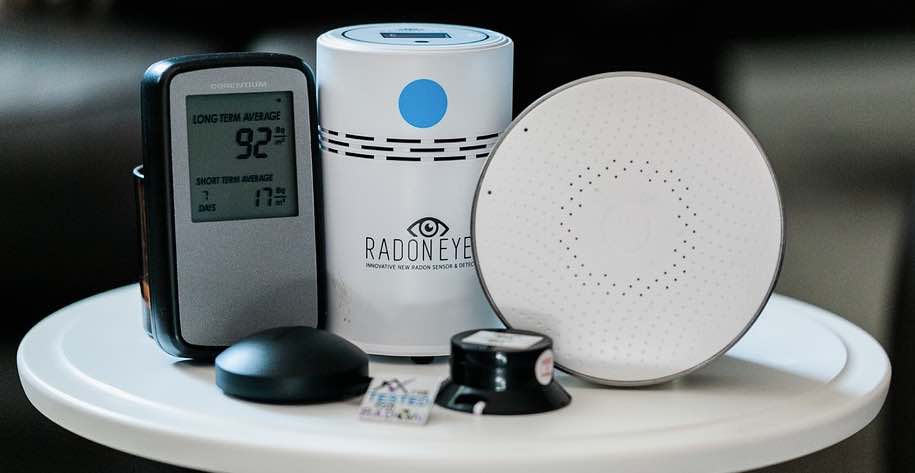
According to a report from the Environmental Protection Agency (EPA), radon gas is the second-largest cause of lung cancer in the United States, second only to smoking. It accounts for around 21,000 lung cancer-related deaths every year. (2)
Radon is a dangerous radioactive gas to people and animals when inhaled in high concentrations.
A radon detector is a safety device you should have in your house. These devices can detect radon gas levels in your home. Using a radon gas detector or radon detection kit, you can avoid unwanted exposure to these hazardous gases.
4. Night Lights

You can avoid late-night accidents with the use of simple, low-cost night lights. Bear in mind that you should keep night lights away from flammable textiles such as bedspreads.
Furthermore, purchase new night lights that include mini-neon bulbs that are more aesthetically pleasing. Most businesses also sell cutting-edge plug-ins that illuminate in the dark and fade as the day progresses. For better safety, you should ensure that all of your rooms have appropriate lighting.
5. Motion Sensor Lights

Many police agencies and security professionals advise installing motion-sensor lights as a deterrent against nocturnal attackers for a reason.
These energy-efficient bulbs cast a bright light on would-be burglars, deterring those who prefer to commit crimes in the dark. Installing motion-sensor lights also provides safe passage to anyone entering a home late at night.
Outdoor motion-sensor lights can help you see and scare away attackers at night. Moreover, you may install a sensor to replace existing lamps without the need for extra wiring and they are great for energy savings.
6. Slip-Resistant Throw Rugs

In the shower stall and bathtub, a suction-type rubber mat or adhesive-backed rug will keep you steady. When you step out of the tub, a non-slip mat will save you from slipping. I highly recommend that you use slip-resistant rugs throughout your home to prevent accidents.
7. Bathroom Grab Bars
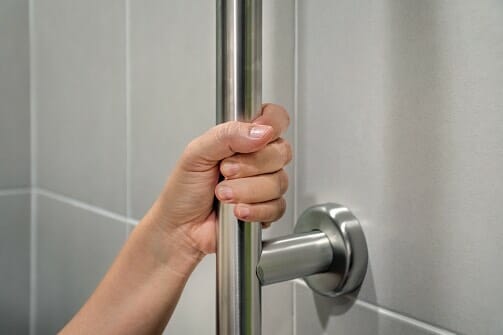
You can prevent yourself from slipping when taking a bath using grab bars. Grip a grab bar on the wall when getting in and out of the tub.
They are available at most hardware stores. You should secure them with long screws into the wall studs, not just the plaster, tile, or wallboard.
8. Smart Locks
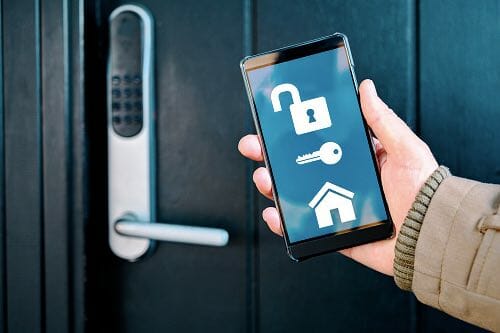
Upgrade your door’s regular lock with a smart lock. You won’t have to worry about misplacing your keys or hiding them in the flower pot for visitors. You may also use the app to regulate access to your house by locking, unlocking, and changing other settings.
9. Deadbolt Locks
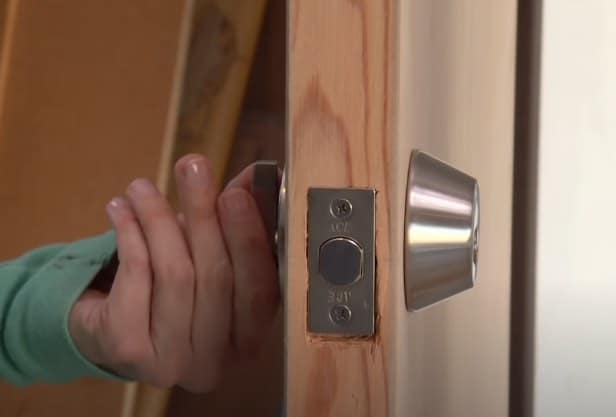
Most often, burglars select easier targets. Crooks will recognize that you take appropriate measures to protect doors and windows, and they will most likely search for another location for entry.
You may start by securing your front door if you want to avoid break-ins. There are numerous options, but it is crucial to have a dependable and long-lasting lock.
Furthermore, a desperate burglar will always look for other entry points to break inside your house. Installing a deadbolt lock on each of your home’s doors is one of the best methods to secure your home’s entry points. Request a pick- and drill-resistant deadbolt lock from the locksmith. It would be best to consider investing in robust doors; a good lock is useless on a flimsy door.
10. Ground-Fault Circuit Interrupters

Ground-faults develop when such a low-resistance grounding path is from a broken tool or electrical system.
These devices are one of the safety items you should have to improve the safety inside your house. The ground-fault circuit interrupter, or GFCI, is an incredibly quick circuit breaker that can switch off power generation in as little as 1/40 of a second in the case of a ground fault.
Although GFCIs are standard in most new homes, older ones may not have them. You can replace your outlets for $9-$13 each or purchase portable GFCIs for $12-$30 each.
11. Fire Extinguishers
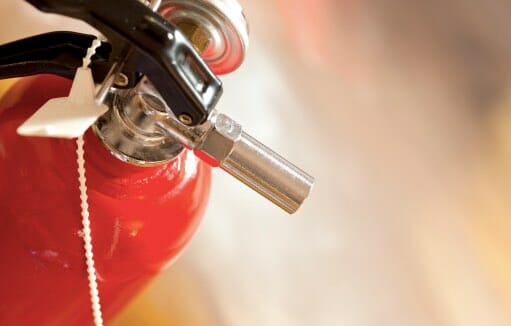
Time is crucial when it comes to home fires. In a worst-case scenario, fire can become life-threatening in just a few minutes.
Although a fire extinguisher may not be the most exciting or appealing addition to your home, it is an essential safety item that might save your life.
Please place it in a convenient location so you can put out a fire quickly and effectively, or at the very least contain the flames while your family flees to safety.
12. First-Aid Kit
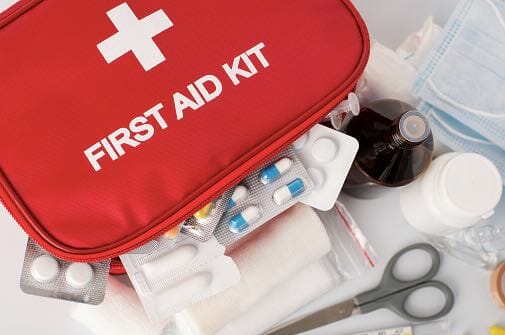
Accidents do occur. So you should keep a basic first aid kit in your household because you never know when you might need it.
Your first-aid kits should have the following safety essentials:
- Antiseptic ointment
- Bandages and gauze pads in various sizes
- Adhesive tape
- Cold packs
- Disposable gloves
- Hand cleanser
- Scissors and tweezers
- Ipecac syrup
- Eyewash
Check expiration dates and refill as needed. Also, you should get some training on how to deal with injuries.
13. Fire-Safe Window Guards
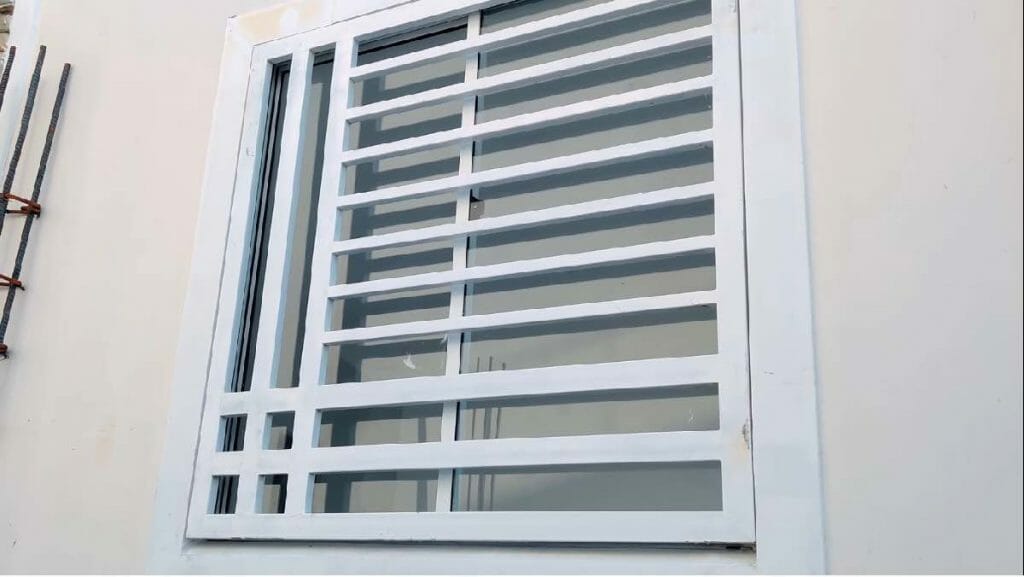
Every year, children die or suffer significant injuries as a result of falls from windows. Screens are primarily designed to keep pests out, so don’t rely on them to keep you safe from falling.
A straightforward way to keep your family safe is always to lock your windows, especially when not in use. Window protectors must include a release mechanism so you can open them in an emergency. For correct placement, contact your local fire department.
14. Evacuation Plan
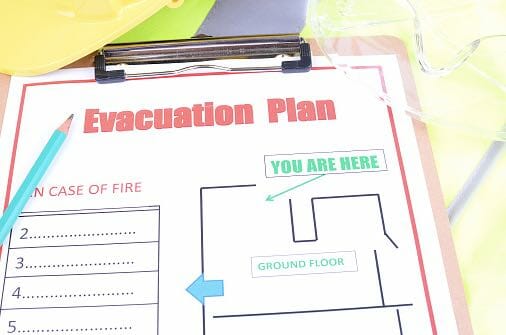
Proper preparation prevents accidents from taking place. All families must plan for and drill for all types of emergencies. Planning an evacuation plan might come in handy. You should know how to get out of your house as quickly as possible and how to avoid becoming trapped. Include two exits in each room in your home. Before a genuine catastrophe strikes, practice an evacuation strategy with your family. (3)
15. Disaster or Supplies Kit
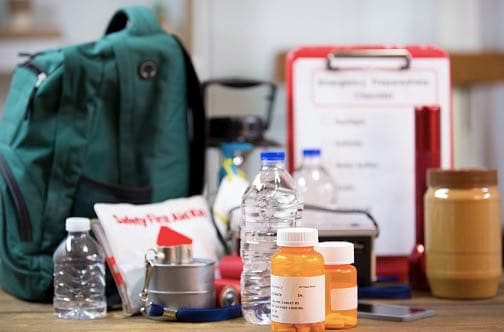
A disaster might occur where you likely do not expect it. To be prepared for the worst-case scenario, you must always have an emergency supply kit in your house. Organizing a disaster kit is one way to do it.
You may take this kit with you in the event of an issue.
Always remember to include the following items:
- Nonperishable food
- Water
- Cash
- Flashlights
- Tools
- Battery-operated NOAA all-hazard alert radio
- First-aid
You may also keep this emergency supply Kit in a car or unlocked garage to save time when evacuating.
16. NOAA All-Hazard Alert Radio

In the event of a natural disaster, such as a tornado, storm, earthquake, or other disasters, this radio will come in handy. You’ll hear the National Oceanic and Atmospheric Administration’s frequency, which will include instructions on whether or not to stay at home, when to leave, and the status of the emergency. You can find these kinds of radios at a neighborhood electronics store.
17. Emergency Phone Numbers
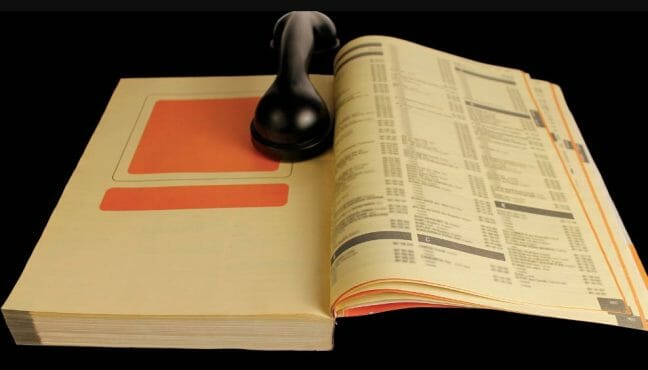
The American Association of Poison Control Centers has developed a national number that anyone can call to contact their nearest poison control center. The number is 800-222-1222. Please make a list and post it near every phone in the house.
You should include in the list the local police and fire departments, as well as your physician. You may also have the phone numbers of friends and relatives, as well as the number for your local health center.
18. Tested Appliances
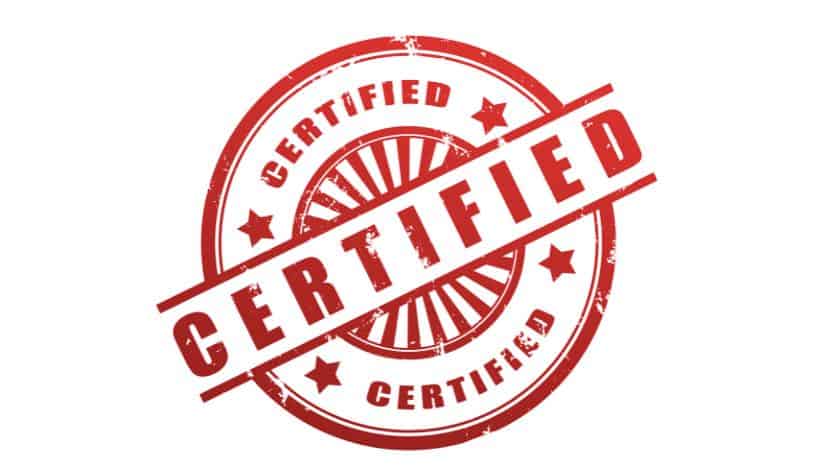
A recognized testing institution, such as Underwriters Laboratories, the Canadian Standards Association, or the American Gas Association, should certify your appliances that use gas or electricity.
19. Safety Ladder

Even though we all hope we never have to experience the destruction and loss of life that a house fire may bring, it’s still necessary to prepare ourselves. An emergency ladder could save your life if something terrible happens. Consider buying a multistory model and storing it somewhere accessible, perhaps near a window, so you or your family may safely and rapidly escape the house in the event of a fire.
References
(1) Carbon monoxide – https://www.nhs.uk/conditions/carbon-monoxide-poisoning/
(2) lung cancer – https://www.mayoclinic.org/diseases-conditions/lung-cancer/symptoms-causes/syc-20374620
(3) evacuation plan – https://www.osha.gov/etools/evacuation-plans-procedures

